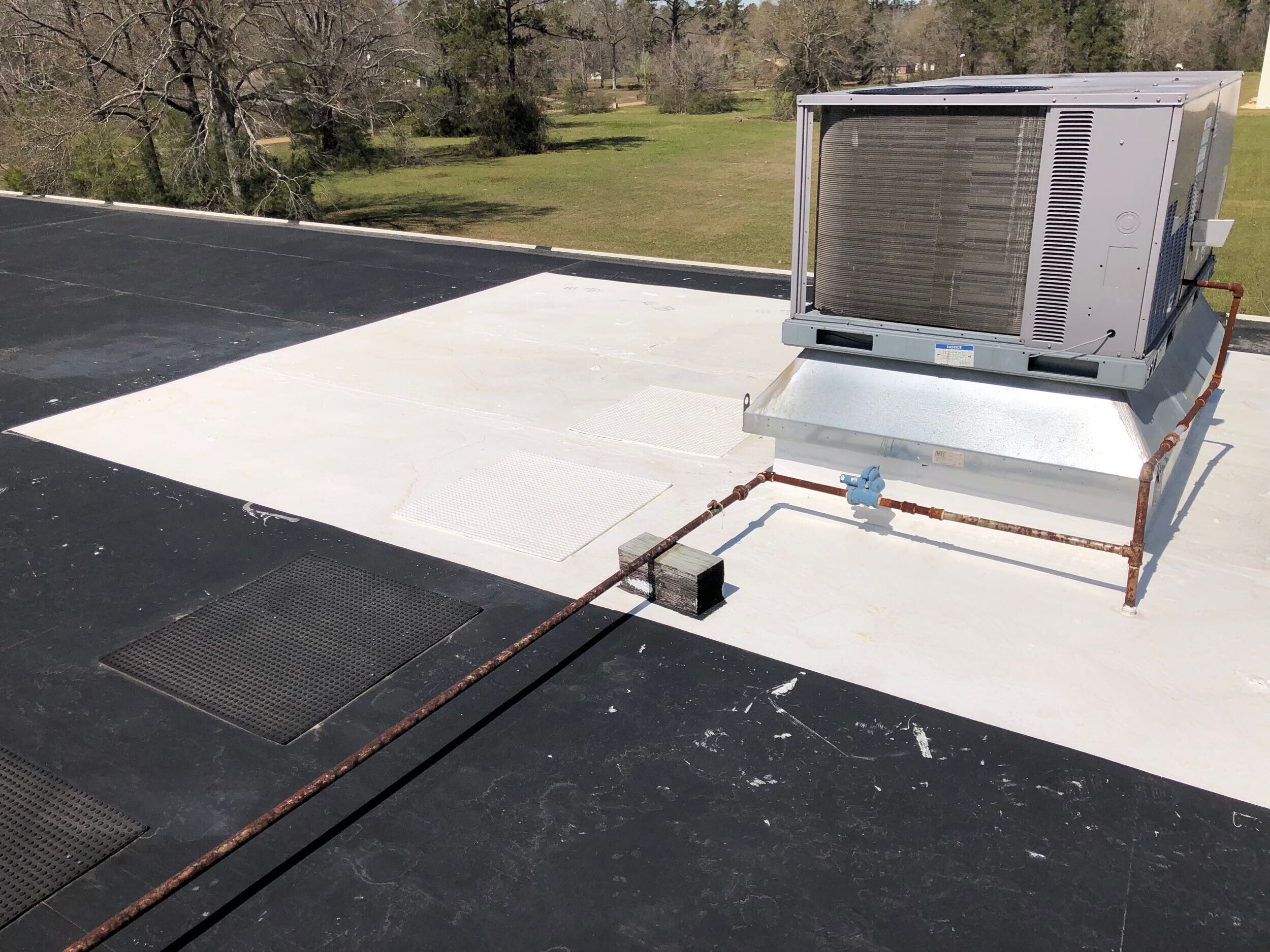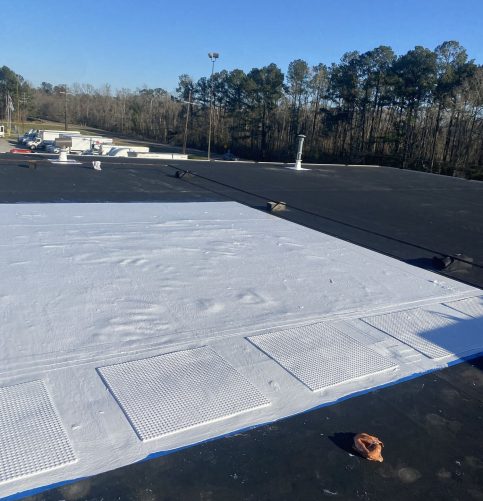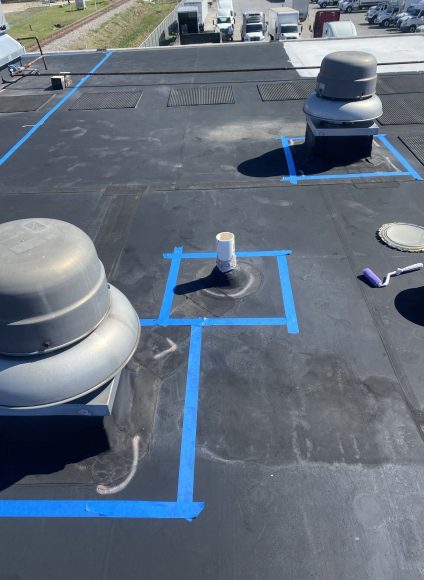Ethylene Propylene Diene Monomer
What is EPDM?
Ethylene Propylene Diene Monomer (EPDM) is a durable, synthetic rubber roofing material used extensively in commercial roofing applications. Known for its flexibility and exceptional resistance to weathering, EPDM is designed to withstand harsh elements, including UV rays, ozone, and extreme temperature fluctuations. This makes it a top choice for buildings seeking a reliable and long-lasting roofing solution.
EPDM roofing is typically available in black or white and is applied as a single-ply membrane that provides outstanding performance for both new builds and roof replacements. Its durability, ease of maintenance, and energy-efficient properties make it a favored choice for many commercial property owners.


What is an EPDM Roof System?
An EPDM roof system consists of a single-ply membrane made from synthetic rubber, which is mechanically attached, fully adhered, or ballasted onto the roof deck. The seams of the EPDM membrane are sealed using adhesives, tape, or liquid sealants to create a watertight, durable surface.
EPDM roofing systems are known for their long lifespan and low maintenance needs. They offer excellent weather resistance, exceptional longevity, and reliable protection against leaks and water infiltration.

Benefits of EPDM Roofing
- Exceptional Durability: EPDM roofing membranes are resistant to extreme weather conditions, UV radiation, ozone, and aging, providing protection that can last for decades.
- Energy Efficiency: The black EPDM membrane naturally absorbs heat, making it a good choice for colder climates where winter heat retention is a priority. For warmer climates, white EPDM is available and provides superior reflectivity to help reduce cooling costs.
- Cost-Effective: EPDM offers excellent performance at a relatively low cost compared to other roofing materials, making it a budget-friendly choice for commercial properties.
- Low Maintenance: Once installed, EPDM roofing systems require very little maintenance. Routine inspections and cleaning are all that’s needed to keep your roof in great shape for years to come.
- Environmental Benefits: EPDM roofs are a sustainable option, as they are made from recyclable materials and have a long lifespan, reducing the need for replacements.
When to Use an EPDM Roof System
EPDM roofing is ideal for:
Commercial Buildings
Whether you're running an office building, warehouse, or manufacturing facility, EPDM provides a reliable roofing solution with a proven track record.
New ConstructioN
EPDM is a great roofing option for new builds due to its flexibility and performance under a wide range of environmental conditions.
Re-Roofing
EPDM is a cost-effective and low-maintenance option for replacing older, worn-out roofs that need to be upgraded to meet modern standards.
Cold Climates
EPDM’s ability to retain heat makes it particularly suitable for buildings in colder regions where energy conservation and heat retention are key priorities.
Large, Low-Slope Roofs
EPDM is highly effective on low-slope or flat roofs, making it an excellent choice for large commercial buildings, such as warehouses and distribution centers.
EPDM Roof Repairs and Maintenance
EPDM roofs are easy to maintain, but periodic inspections and prompt repairs are crucial for maximizing their lifespan. Here’s what you need to know about keeping your EPDM roof in top condition:
Have your EPDM roof inspected regularly to ensure there are no tears, punctures, or damage caused by weather events. Catching issues early can prevent costly repairs later on.
Keep your roof clean by removing debris such as leaves, dirt, and branches that may accumulate over time. Cleaning also helps to maintain the roof’s reflectivity if you have the white EPDM membrane.
EPDM roofing systems rely on properly sealed seams. If you notice seam separation or damage, it’s important to have them resealed with an EPDM-compatible adhesive or sealant to prevent leaks.
While EPDM is highly resistant to damage, if the roof membrane is punctured or torn, repairs should be carried out using EPDM patches and adhesives to restore the roof’s waterproof integrity.
Flashing and edge repairs around penetrations, drains, and parapet walls should be checked regularly to ensure no water is getting beneath the membrane.

